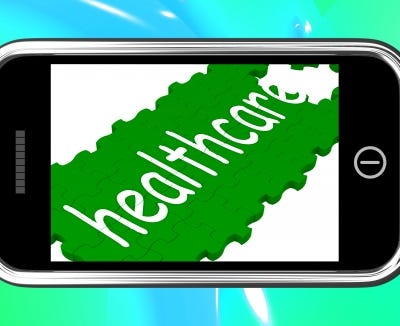To survive past launch, mobile health products must show strong evidence across clinical outcomes, usability/workflow, security, scalability, and economic value.
September 16, 2016
To survive past launch, mobile health products must show strong evidence across clinical outcomes, usability/workflow, security, scalability, and economic value.
Anand K. Iyer, PhD, MBA

Mobile health continues to attract startups and developers. The space is still new and exciting, and the needs it can help address are vast. So, how do you ensure that your company's mobile health application rises above the fray?
If your organization is developing a wellness app that helps consumers track fitness metrics and diet, then a focus on user experience and performance is critical. But for apps that monitor vital signs, track medications, give advice to patients, enable telehealth visits, or deliver clinical data to physicians at the point of care, there's so much more to consider.
Often referred to as digital health therapeutics, these "heavier" solutions tackle chronic conditions such as hypertension and diabetes. They should aim to enhance patient engagement, increase interactions with a patient's healthcare team, and, ultimately, improve patient outcomes over time. To succeed in this realm, however, you need evidence across multiple domains.
It all begins with the domain of engagement. The first hurdle is getting a lot of people to download the app and start using it, so you have a basis to measure their progress. This might require some sort of enticement--a "try before you buy" offer (if yours is a paid or prescribed mHealth solution) or a gamification element that attracts the eyeballs.
But that's just the beginning. The following are some other domains to consider.
Outcomes
Whether your solution is designed to improve healthcare staff productivity or lower someone's cholesterol, you'll need to demonstrate its effectiveness. For chronic disease management applications, you'll need to collect and analyze patient data. There are two methods for obtaining clinical evidence: the gold-standard randomized control group study and--with the increasing proliferation of digital health solutions--the more nimble, yet highly effective micro-trial. Cash-strapped startups can start with the micro-trial, which may be less costly and faster. Consider all of the patient health data that's available today through apps and popular devices like the FitBit and the Samsung or Apple watches. By collecting anonymized data from users and applying some basic analytics tools, you can make useful connections between user outcomes and characteristics such as gender, weight, age, ethnicity, lifestyle (diet and exercise), income, and education. You might still wish to conduct a control study later, depending upon what you uncover in the micro-trials.
Workflow
Many digital health therapeutics can be more effective with interaction from healthcare staff. If you're going to ask an overworked physician to do something extra, the effort better provide immediate value to his/her job. This is what's so exciting about mHealth: If the solution is designed well, the doctor picks up the phone in his pocket or clicks the screen on the EMR, and sees a longitudinal and holistic picture of what's happened with the patient, thereby helping support clinical decisions and appropriate treatment pathways. If the solution can deliver new information to aid decision-making that wasn't readily available before, even better. The solution should integrate as many relevant data sets as possible so that the nurse or doctor doesn't have to login to yet another system. Look for opportunities to eliminate any provider usability barriers or negative impacts that your technology could have on provider workflow and profitability. Human factors testing with providers helps validate design against users' requirements with an eye on risk and where they struggle.
Security
Consumers often wonder why it's so hard for healthcare organizations to protect their data. The problem is, patient data resides in many places, within many different organizations. Therefore, mHealth solutions must incorporate multiple layers of security into the solution itself, while also enabling integration with other providers' systems in a secure way. While this is an industry collaboration issue as much as it is a technology issue, you don't want to be the vulnerable link in the chain.
Scalability and Extensibility
To gain market share and mind share, your app must attract a lot of users. The backend technology infrastructure for your solution must be able to flex with unpredictable demand without causing the app to run slow for everyone. Also, the application will have better long-term viability if it is applicable to more than one condition. No healthcare organization wants to amass a bunch of point solutions. Strive to develop a multi-purpose solution and one that also can run on many types of mobile internet devices.
Economic Value
There are several options for a profitable business model. One is risk sharing, in which the health plan or provider pays the vendor based upon improved outcomes and/or reduced costs for managing patient populations linked to using the technology. Prescribed solutions, such as WellDoc's BlueStar digital therapeutic for diabetes management, can be reimbursed through the health plan just as are other pharmaceuticals. Paid apps may be a tried-and-true third model, if your solution provides ample benefits to the consumer to justify the fees.
As you can see, there's no short road to bring to market a viable and valuable mHealth solution. Plan ahead and ensure you have the proper resources and timetable to address the necessary domains of evidence for your innovation, thereby giving it staying power.
Dr. Anand K. Iyer is chief strategy officer at WellDoc, a digital health technology company that develops mobile solutions to drive behavioral and clinical change in chronic disease. WellDoc has commercialized BlueStar, a digital therapeutic, for adults with type 2 diabetes.
[image courtesy of STUART MILES/FREEDIGITALPHOTOS.NET]
You May Also Like


